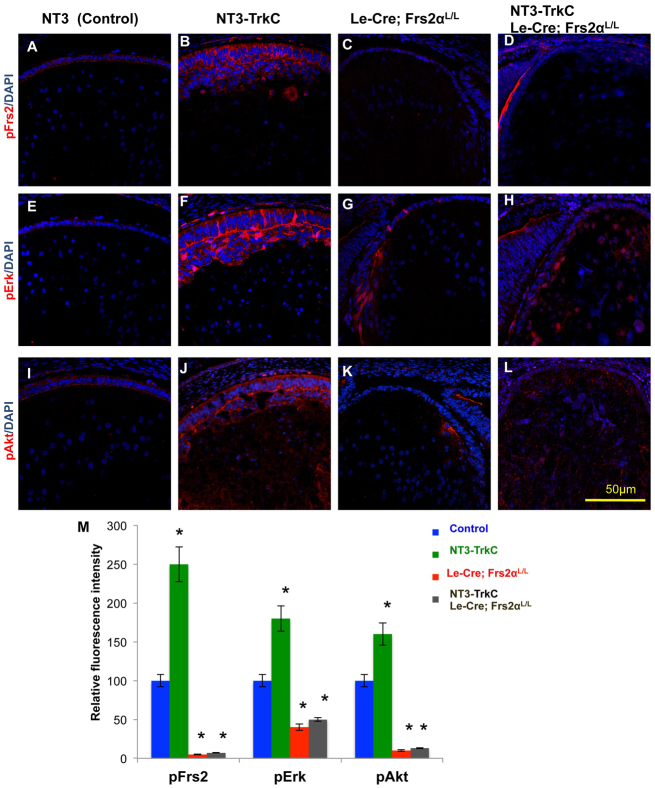Fig. 8.
Activated NT3-TrkC signaling induces Frs2α-dependent phosphorylation of Frs2α, Erk and Akt in the lens epithelium. (A-L) Control (A,E,I), NT3-TrkC (B,F,J), Frs2α-deficient (C,G,K) and NT3-TrkC lenses lacking Frs2α (D,H,L) were analyzed at E15.5 to determine the activation (phosphorylation) state of Frs2α (A-D), Erk (E-H) and Akt (I-L) in the lens epithelium. The loss of Frs2α decreases phosphorylation of Erk and Akt in the lens epithelium and this effect is dominant because although NT3-TrkC induces increased phosphorylation of Frs2α, Erk and Akt in the transgenic lens epithelium, this response requires Frs2α (compare B,F,J with D,H,L). (M) Relative fluorescence intensity for immunofluorescent staining was analyzed with the NT3 control value being set at 100%. Error bars on the graphs represent s.e.m. Asterisks represent significant differences (all significant P-values were <0.001).

